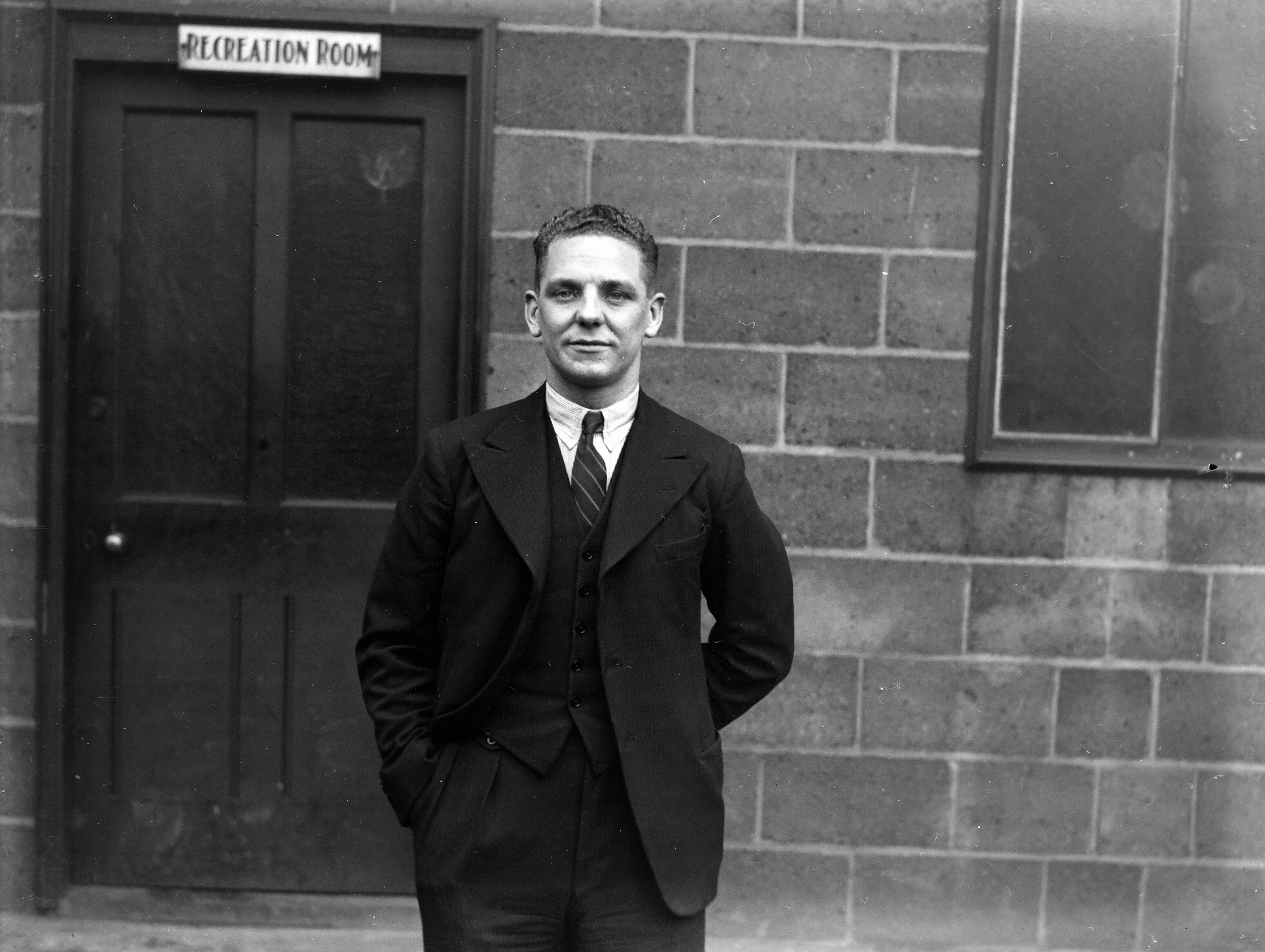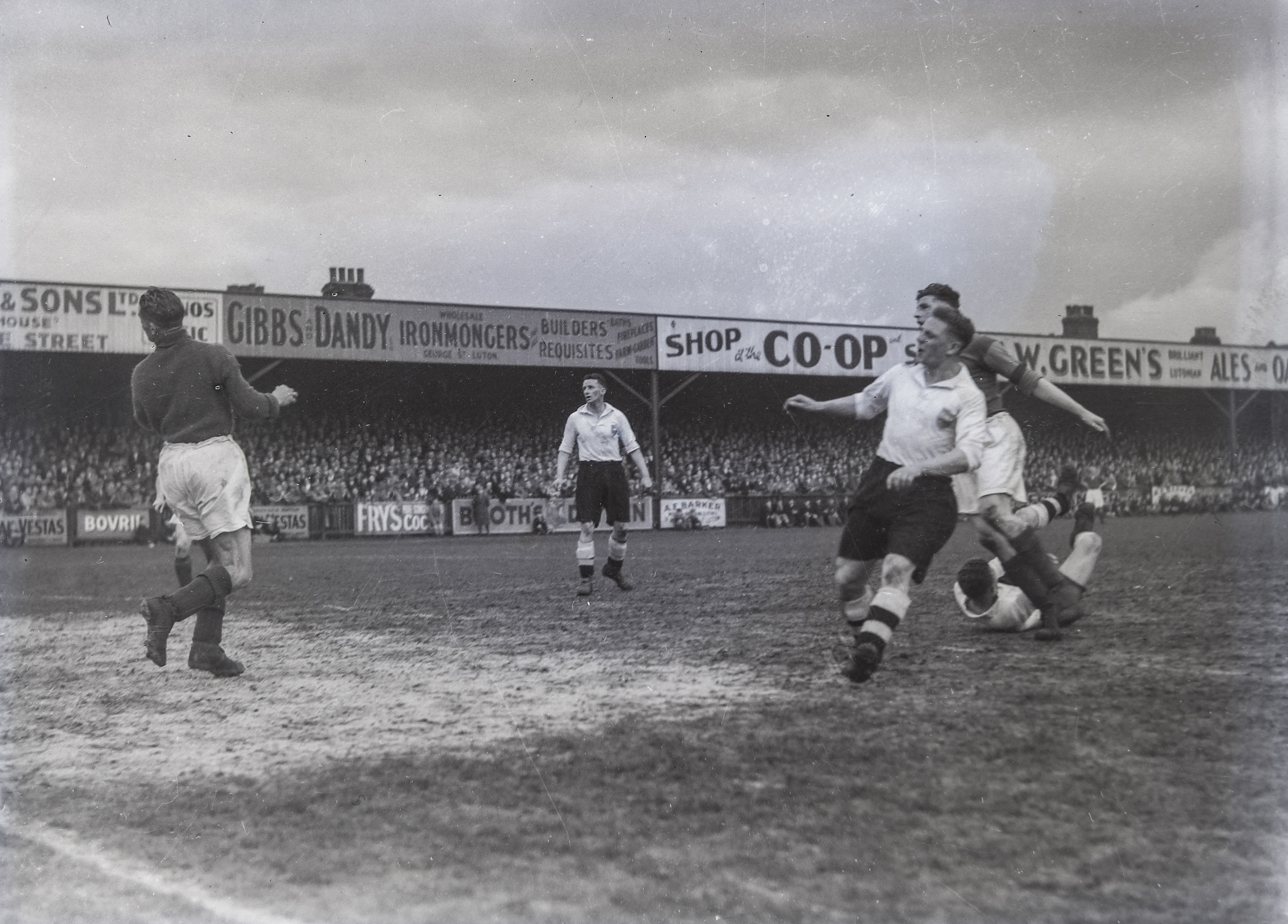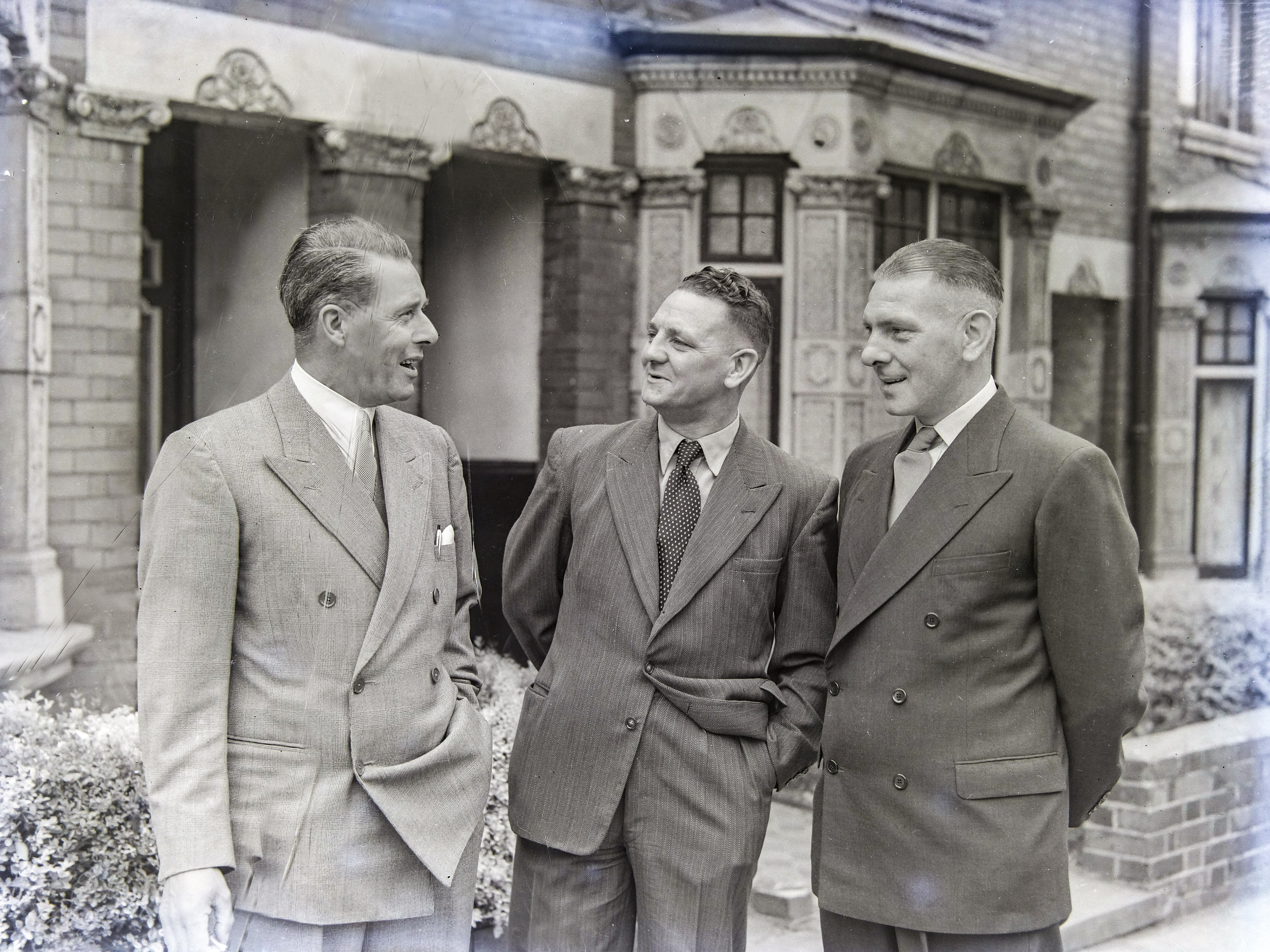FRED ROBERTS - FROM WORKS FOOTBALL TO THE TOP FLIGHT
By Will Foster
The record books will tell you the 30,069 in attendance for
the FA Cup Quarter Final replay in March 1959 against Blackpool is the largest
crowd Kenilworth Road has seen. However, if every Luton fan who claimed to be
in the ground on Easter Monday 23 years earlier were to be believed, there must
have been at least 100,000 in attendance.
The match in question is, of course, Joe Payne’s 10 goal
salvo against Bristol Rovers. Some of the multitudes watching might have
ventured that one of the goals belonged to George Martin, with the future Town
boss bundling in a Payne header only for the referee to decide the ball had
already crossed the line. This opinion wasn’t shared by one of the men closest
to the action.
‘I was in the goalmouth,’ Fred Roberts said in a 1974
interview, ‘and it was Joe’s goal for me.’
Fred Roberts was born in Greets Green, West Bromwich in 1908, the son of an Iron Worker and the youngest of eight children at the time of his birth. His route into professional football was not a straightforward one. In his mid-twenties he was still playing for a Piggotts, a works side, when he was offered trials by a number of clubs including Stoke City, which were all unsuccessful.

Birmingham City were interested too though and signed Fred
in October of 1933. Remarkably, just a few weeks after playing in local
football, he was lining up at centre-forward in the old First Division (now
Premier League) to face Wolves in-front of over 30,000 people at St. Andrews,
the game ending in a 0-0 draw. A report in the Birmingham Daily Gazette
remarks, ‘even if he didn’t cut up any trees, (Roberts) gave indication of
developing into a very useful leader.’
He would score 8 times in 28 games during that first season
and was singled out by legendary Arsenal manager Herbert Chapman for his
performance at inside-left after a draw at St. Andrews in December 1933. Regardless
he found himself out of favour the following season and was persuaded by Town
boss Harold Wightman to drop down two divisions and join Luton in December
1934.
While some at Birmingham had decided that Roberts was better
suited as a half-back, Wightman had certainly wanted an inside-left and it was in
that position where Fred made his debut a few days later at Millwall, scoring
the first of his 45 goals for the Hatters in a 4-1 win.
‘On this showing the Town have a very useful acquisition,
and when his colleagues become accustomed to his manoeuvres there will be good
results,’ wrote J.J Hunt, aka Crusader, in his match report.
This would prove to be very true. With chairman Charles
Jeyes determined to provide the growing town with Second Division football or
better, Roberts became an almost ever-present fixture at inside-forward during
one the most exciting times the club had ever known and he barely missed a game
for the next four and a half seasons, ending with 198 appearances in total.
Below: Fred Roberts goes close.

Described as a ‘schemer’ he was a scorer as well as a
provider of goals and Joe Payne in particular was to benefit from the service
he provided. His consistency and lack of injuries were likely due in large part
to a focus on diet and fitness that were ahead of its time, including cutting
out white bread and potatoes and halving his sugar ration.
After the near miss in 1935/1936 in which Town fell short of
promotion by a single win, the following year would prove to be the highlight
of Fred’s career as that elusive Third Division title was finally secured. He
played in every match, a feat equalled only by Bill Fellowes, and scored 12
times.
‘For me it was the best side Luton have had,’ Fred would say
in later life, ‘it had everything.’
The arrival of Eddie Connelly in March 1938 would see Fred
move back into the half-back line where he proved himself to be equally adept
and was eventually awarded the captaincy. Sadly though the outbreak of war
would essentially end his career, which wound down with a couple of seasons at
Kettering when football returned.
Remaining in Luton for the rest of his life until his
passing in 1979 he worked for a number of local companies such as SKF and as a
courier for the Luton College of Technology while living on Leicester Road with
his wife, Mary. He remained in contact with his adopted club and, when
Birmingham released a centre-half by the name of Syd Owen, it was Fred who
recommended him to the Town.
‘The best day’s work I ever did was when I came to Luton,’
he said in a 1939 interview, ‘I have never had a single cause to regret the
move and no club could have treated me better.’
Below: Fred Roberts (centre) in later life, with George Martin and Jock Finlayson.

